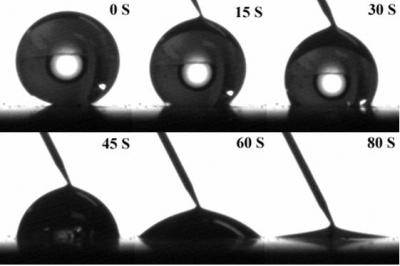In a way, nanotubes are nature’s smallest candles. These tiny tubes are constructed from carbon atoms and they are so small that it takes about 100,000 laid side-by-side to span the width of a single human hair. In the last five years, scientists have discovered that some individual nanotubes are fluorescent. That is, they glow when they are bathed in light. Some glow brightly. Others glow dimly. Some glow in spots. Others glow all over.
Until now, this property has been largely academic. But researchers from the Vanderbilt Institute of Nanoscale Science and Engineering (VINSE) have removed an obstacle that has restricted fluorescent nanotubes from a variety of medical applications, including anti-cancer treatments.
















